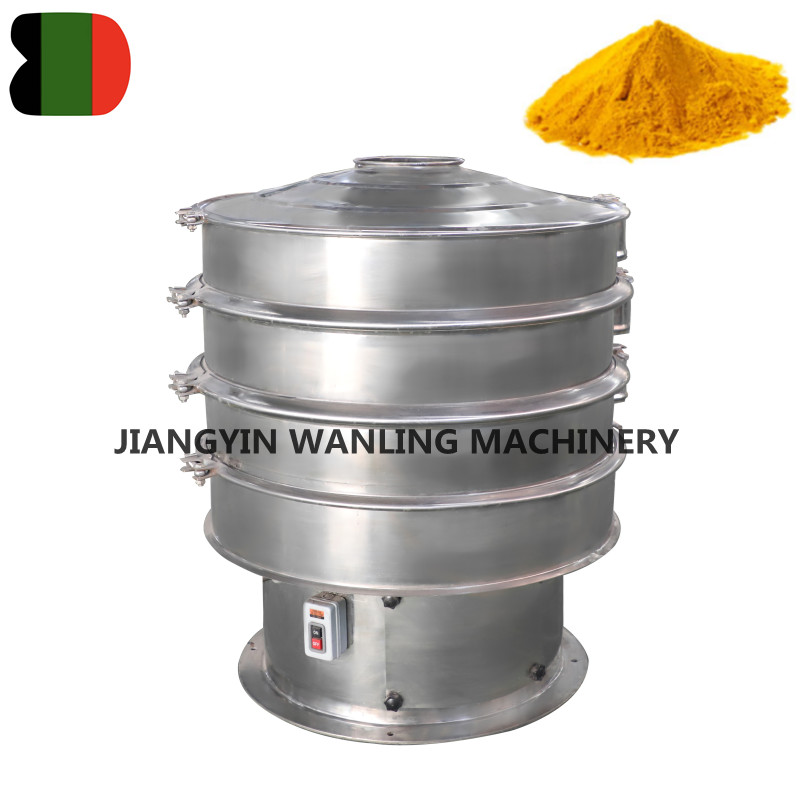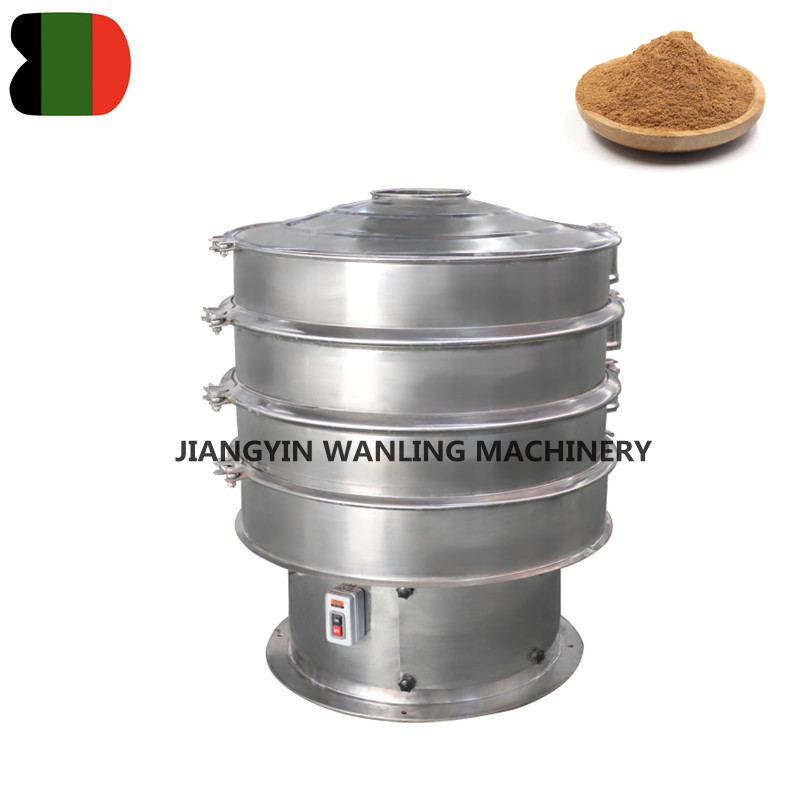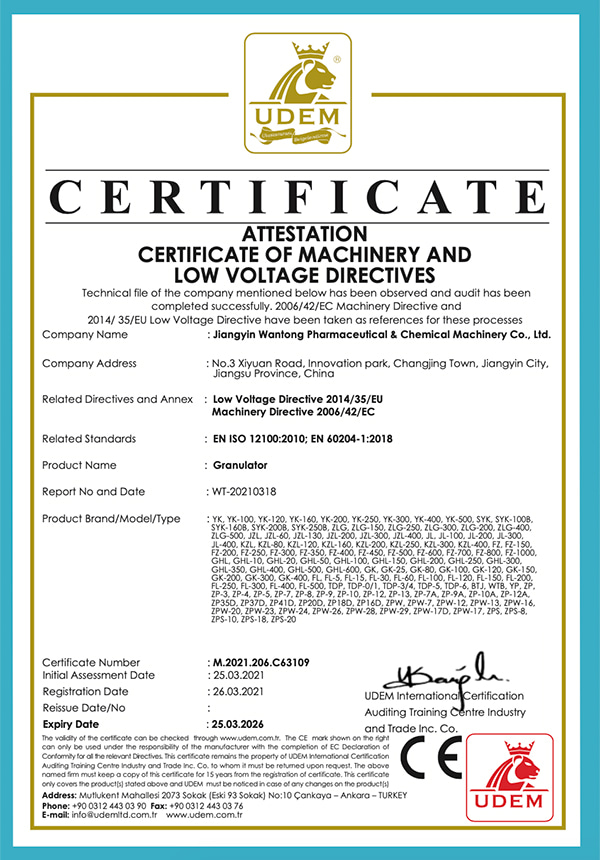Sifter Machine Manufacturer
-

ZS Food Powder Sifting Sieveing Machine
ZS Series High-Efficient Screener is a kind of great volume machinery designed according to the foreign technology and information. -

ZS Industrial Vibrating Food Sifter Machine
ZS Industrial Vibrating Food Sifter Machine, a high-performance solution for separating dry materials across various industries, including f... -

ZS stainless steel powder sifting sifter machine
The sifter machine contact parts with raw material are all made of stainless steel. So it can be widely used in pharmaceutic, foodstuff, ch...
sifter machine is widely used in industries such as pharmaceuticals, food, and chemicals. Its main function is to screen powders or particles with different mesh sizes. It can be specially customized according to customer requirements. Our company has both vibrating screening machines and special ultrasonic screening machines for customers to choose from.

About Us
Honor
-
 Honor
Honor -
 CE
CE
News
-
Industry News 2025-12-12
How to Choose the Right Ribbon Blender for Powder and Granule Mixing Choosing a ribbon blender for ...
View More -
Industry News 2025-12-07
Introduction: The Versatile Workhorse of Size Reduction In the vast landscape of industrial processi...
View More -
Industry News 2025-11-24
The Importance of Efficient Mixing in Powder Processing In powder processing, achieving a uniform an...
View More -
Industry News 2025-11-18
A rapid mixer granulator is a high-shear wet granulation system widely adopted in pharmaceutical man...
View More
Industry Knowledge Expansion
How stable is the sifter machine during long-term operation?
In today's fast-paced production environment, as a key piece of equipment for improving the efficiency of material handling, the stability of the sifter machine during long-term operation has become a focus of user attention. Stability is not only related to production efficiency but also directly affects maintenance costs and production safety.
Stability is one of the important indicators to measure the performance of a sifter machine. A sifter machine that operates stably can ensure the continuous screening of materials, reduce downtime, and thus improve production efficiency. In addition, stability also implies the reliability and durability of the equipment, reducing production interruptions and maintenance costs caused by equipment failures.
Factors Affecting the Stability of Sifter Machines:
Design and Manufacturing: Excellent design and manufacturing processes are the foundation for ensuring the stability of a sifter machine. High-quality materials and strict production processes can significantly improve the durability and reliability of the equipment.
Material Selection: The choice of materials for key components such as the sifter machine's mesh and body plays a crucial role in its long-term stability. Materials that are wear-resistant and corrosion-resistant can extend the service life of the equipment.
Vibration Control: sifter machines generate vibrations during operation, and effective vibration isolation and control techniques can reduce wear on the equipment and enhance stability.
Motor and Drive System: A stable and efficient motor and drive system are at the core of ensuring the stable operation of a sifter machine.
Maintenance: Regular inspection and maintenance are key to ensuring the long-term stable operation of a sifter machine. This includes checking the integrity of the mesh, tightening bolts, and lubricating moving parts.
Operating Procedures: Adhering to correct operating procedures can prevent improper operation from damaging the equipment and affecting stability.
Environmental Adaptability: sifter machines need to adapt to different working environments, such as temperature and humidity, to maintain their stability.
Choosing a sifter machine with high stability is crucial for manufacturing enterprises. The reputation of the manufacturer, the quality of the equipment, and the maintenance by the user are all key factors in ensuring the long-term stable operation of a sifter machine. By considering these factors comprehensively, users can choose a sifter machine that best meets their production needs, thereby achieving an efficient and stable production process.
What are the special requirements for the application of sifter machine in the food processing industry?
In the food processing industry, sifters play a vital role, not only influencing the quality of the food but also directly affecting consumer health.
Special Requirements for Sifters in the Food Processing Industry
Sifters are extensively used in the food processing industry, from the initial treatment of raw materials to the final screening of finished products. However, due to the specific nature of the food industry, sifters must meet a series of stringent requirements to ensure food safety and hygiene.
Hygiene Standards:Sifters must adhere to strict hygiene standards. All parts that come into contact with food should be made of materials that comply with food safety regulations, such as 304 or 316 stainless steel, to prevent any potential contamination. Additionally, the design of the sifter should facilitate thorough cleaning, leaving no dead corners where bacteria and microorganisms could thrive.
Corrosion Resistance:Since water and various cleaning agents are frequently used in food processing, sifters must possess excellent corrosion resistance. This ensures that the equipment can operate reliably over the long term, even in harsh working environments.
Precision Screening:In certain food processing applications, such as the sieving of spices or milk powder, the precision of the sifting process is critically important. Therefore, sifters need to have high-precision screening capabilities to ensure the uniformity and quality of the food products.
Contamination-Free Operation:During operation, sifters must not generate any substances that could contaminate the food, such as dust or grease. This necessitates good sealing performance in the sifter and design considerations to minimize dust dispersion during the screening process.
Ease of Operation:Production lines in the food processing industry often require rapid adjustments to accommodate different products. Hence, the operation of sifters should be simple and intuitive, allowing workers to quickly adjust the screening parameters and enhance production efficiency.
Easy Maintenance:Maintenance and upkeep of sifters should be straightforward to minimize downtime and ensure continuous production.
The demands placed on sifters in the food processing industry are far higher than in other industries. They require not only efficient screening capabilities but also the assurance of food hygiene and safety. Manufacturers and users alike should fully understand these special requirements and take appropriate measures to meet the high standards of the food processing industry.



 Español
Español
